Listen to an audio story by Annenberg Radio News
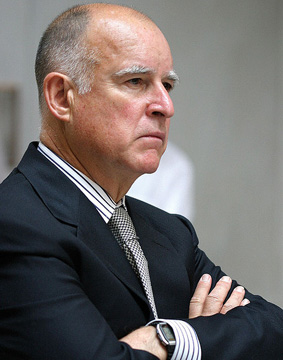 The SB-292 law limits the time period for legal challenges, just for the stadium project. This will protect AEG’s proposed stadium against competitors who might try to delay the project. The law also ensures that Farmer’s Field is built to be environmentally sustainable.
The SB-292 law limits the time period for legal challenges, just for the stadium project. This will protect AEG’s proposed stadium against competitors who might try to delay the project. The law also ensures that Farmer’s Field is built to be environmentally sustainable.
At the news conference for the bill signing, governor Jerry Brown talked about the millions of Californians who are unemployed. He said SB-292 will create new jobs and get residents back to work.
“We’re going to remove some regulations, speed things up; we’re going to protect the environment but we’re also going to do it in a practical way,” he said. “Because there are too damn many regulations, let’s be clear about that.”
John Perez, the speaker of the California Assembly, said Farmer’s Field will have a significant impact on unemployment.
“This project will create 23,000 new jobs, which will benefit California as a whole,” he said. “And at a time when our state still has the second highest rate of unemployment in the nation, we need to be doing everything possible to create new jobs here in California.”
Some remain skeptical about the stadium’s lasting employment projections and others are concerned about increased traffic.
But now all AEG and the city of LA need is an NFL team to play in the new stadium.









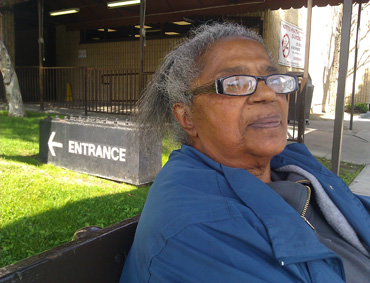 Mamie Stamps lives in a little blue house in Watts. Her 17 grandchildren call her Bear in the Big Blue House, after their favorite cartoon. The inside is cramped; framed pictures of her family plaster the room like wallpaper. Stamps lives alone here. Her kids have grown and moved out; her husband died in 1992.
Mamie Stamps lives in a little blue house in Watts. Her 17 grandchildren call her Bear in the Big Blue House, after their favorite cartoon. The inside is cramped; framed pictures of her family plaster the room like wallpaper. Stamps lives alone here. Her kids have grown and moved out; her husband died in 1992. 

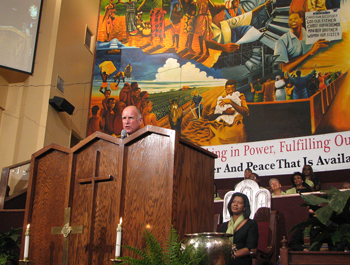
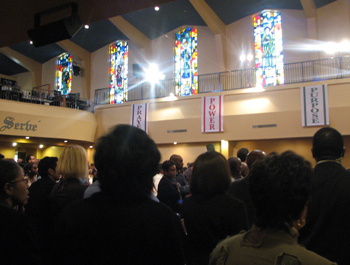 Brown is no stranger to speaking to religious audiences, as he was at one time in the seminary himself. Speaking to the large congregation appeared to energize him, even though he had just been ushered into the building moments before, running late after speaking at another church.
Brown is no stranger to speaking to religious audiences, as he was at one time in the seminary himself. Speaking to the large congregation appeared to energize him, even though he had just been ushered into the building moments before, running late after speaking at another church.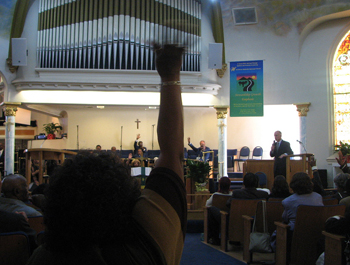 Ward African Methodist Episcopal Church offered a smaller, but no less enthusiastic audience for Brown. His speech became folksier and he spoke on a more intimate level to the church members, who at this point were already two hours into a church service.
Ward African Methodist Episcopal Church offered a smaller, but no less enthusiastic audience for Brown. His speech became folksier and he spoke on a more intimate level to the church members, who at this point were already two hours into a church service.




